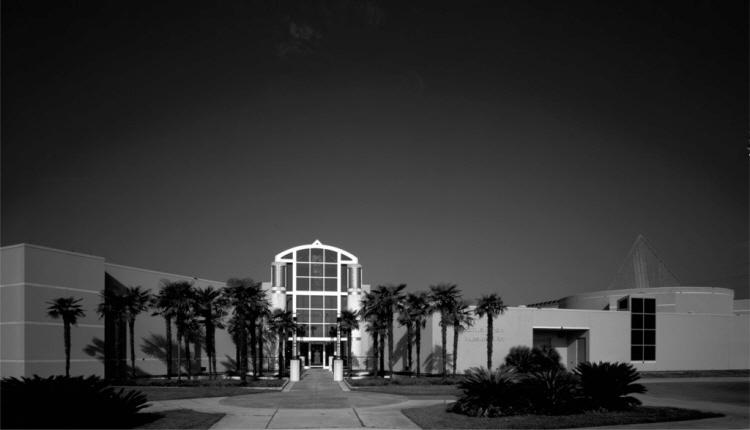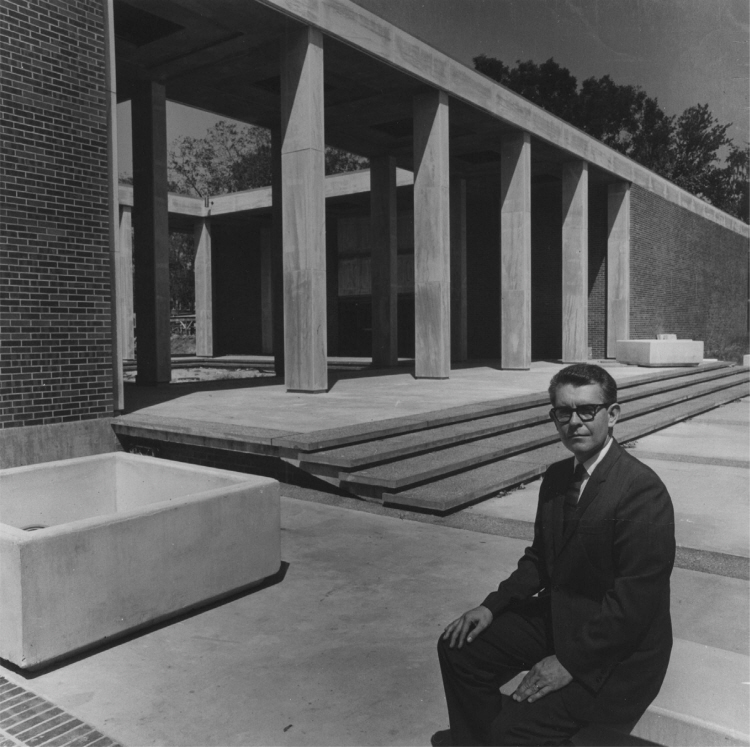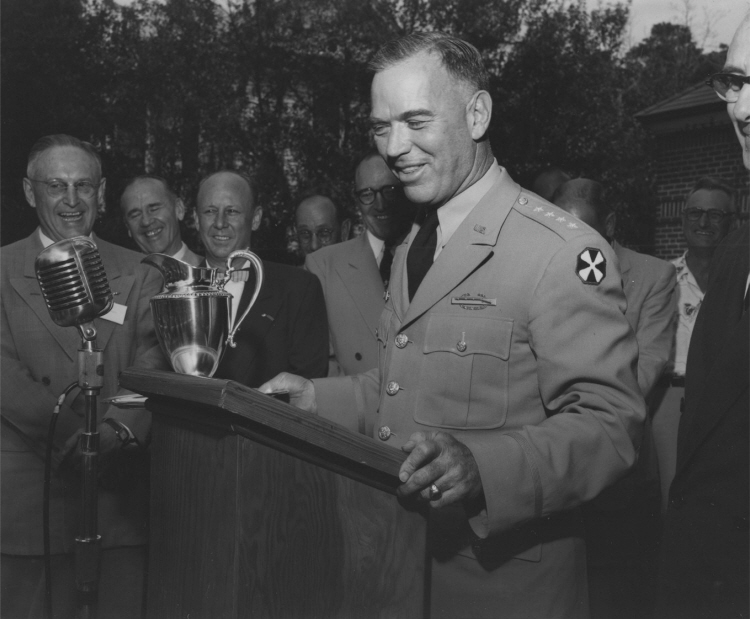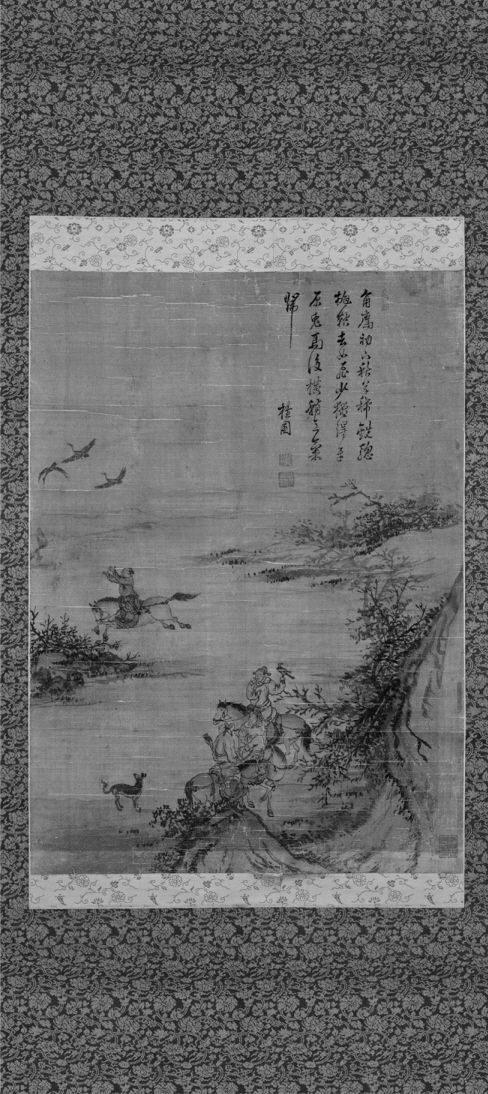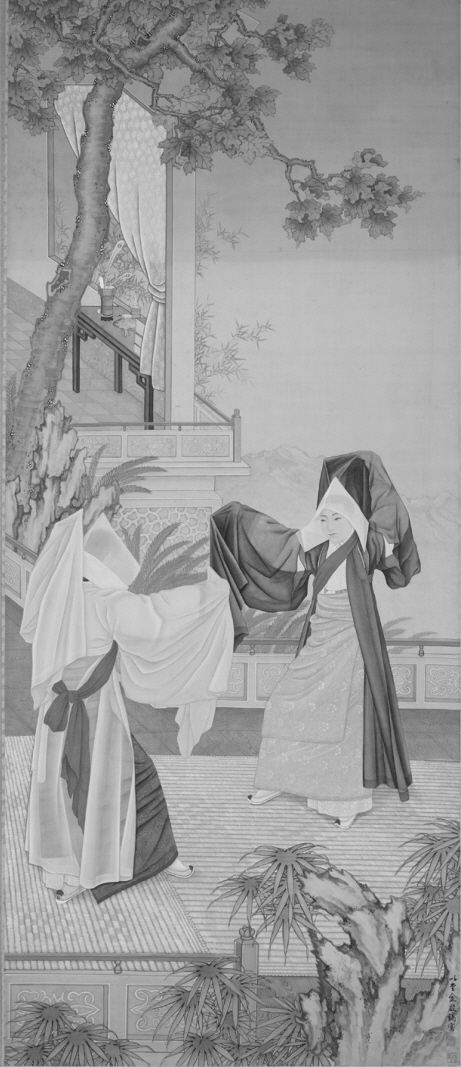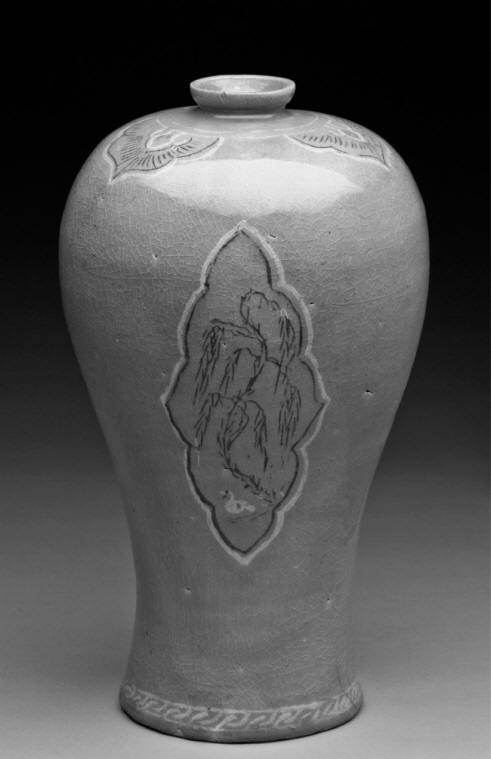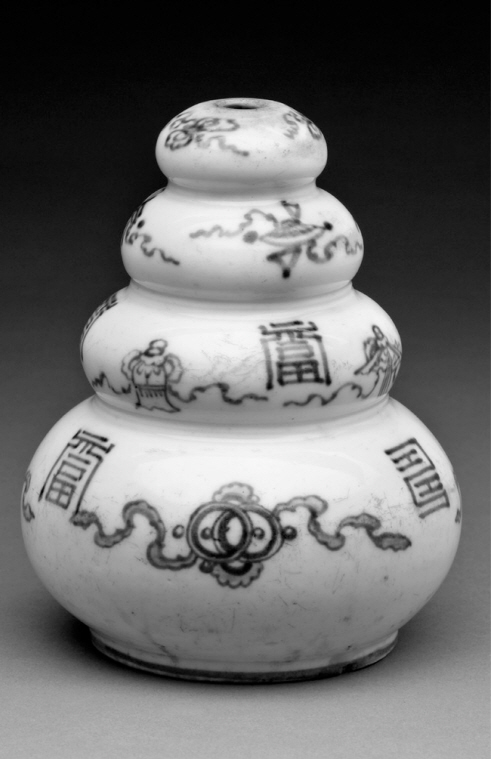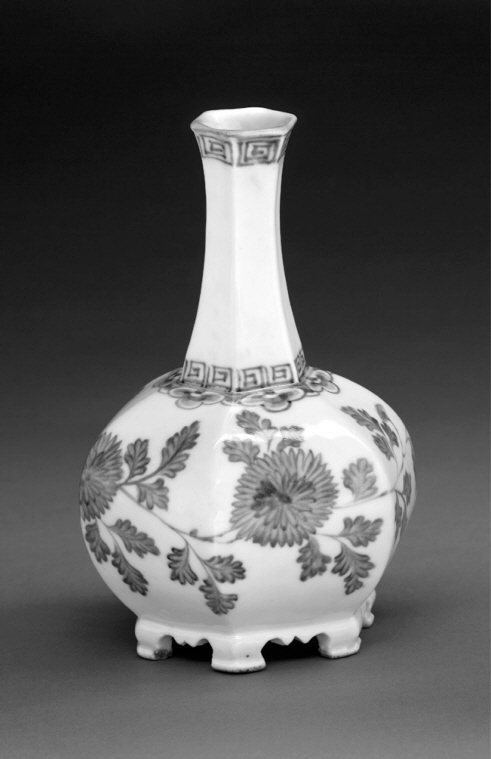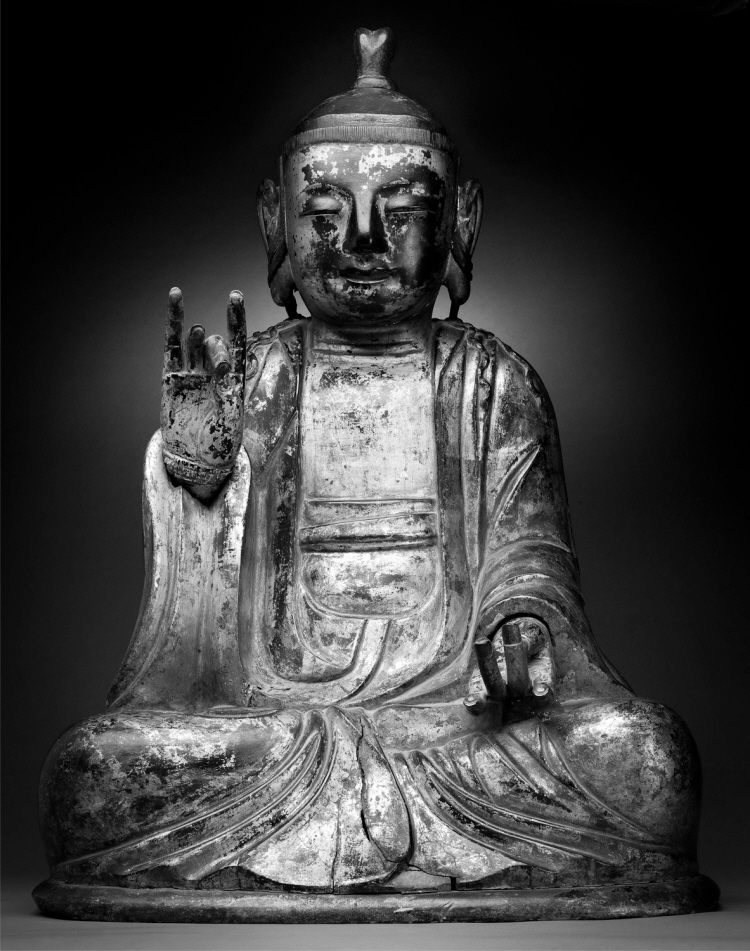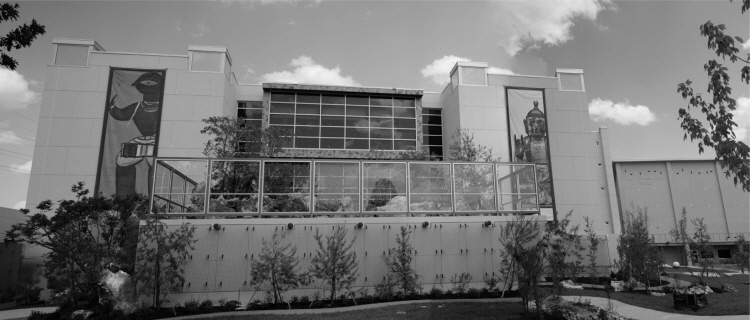



Since its opening in the fall of 1990 at the University of Florida, the Samuel P. Harn Museum of Art (Figure 1) has endeavored to acquire Korean art with documented provenance from private collections by either direct donations from collectors or purchases through art dealers and auction houses.
The summary is divided into several interrelated sections. The first gives a brief overview of the collecting histories and notable figures in the development of the Asian and Korean art collections at the University of Florida’s Harn Museum. The second section notes significant acquisitions of Korean art with prominent provenance histories by the museum. It explores the process of provenance-minded acquisitions and, in particular, how the Harn’s collection-building experiences have unfolded over the thirty-three years since its opening at the University of Florida in 1990. The third section offers a detailed and systematic overview of the various coordinated steps through which the Harn Museum worked to successfully promote the study of Korean art and culture in the United States from 2008 to 2019. It reviews the transformative process from a lesser-known Korean art collection in the southeastern United States to a newly installed, dedicated Korean art gallery sponsored by the Korea Foundation and the Korea Cultural Heritage Administration.
Collecting Asian and Korean Art at the University of Florida
The University of Florida is the state’s oldest and largest land-grant
A University of Florida scholar of particular note during the period from the 1960s through the early 1990s was the pioneering Indian art professor Roy C. Craven Jr. (1924–1996) (Figure 2).
The University Gallery Guild at the University of Florida started out in the 1970s as a group of art advocates across campus interspersed with local supporters who financially backed and worked with the University Gallery. Over the course of several years, the group pushed and fund-raised for the creation of a campus art museum. Following the formation of a formal, university-approved committee to explore the possibility of a new art museum, the University Gallery Guild eventually raised several million dollars for the construction of what would become the Samuel P. Harn Museum of Art. Construction of the Harn Museum which began in 1988 and was completed by the fall of 1990. Since 1997, the Harn Museum has been accredited by the American Alliance of Museums (AAM) for its best practices in museum management and collection care.
The University Gallery and Gallery Guild successfully wove a fabric of campus-wide support among various departments for the arts. This positive outlook ensured that Asian artworks across campus would be reviewed and transferred to the collections at the new Harn Museum. Not only did financial support and works of art come to the Harn Museum from various campus resources; the interest generated on the campus transferred directly to University of Florida alumni and donors.
Because Professor Craven was a scholar of Indian art, 111 Asian artworks from the University Gallery collection are now part of the Harn’s permanent collection. Craven’s relationship with George Bickford accounted for 53 gifts of South Asian art to the University of Florida. In addition, the Crayola Crayon heir Edwin Binney III (1925–1986) presented Craven with donations of 18 Indian miniature paintings and drawings for the collection.
In 1988, General James A. Van Fleet (1892–1992) (Figure 3) donated the first Korean artworks accessioned by the Harn Museum. Van Fleet was an active participant on the University of Florida campus from the 1920s through 1992, having important roles with university athletics as well as the Reserve Officers’ Training Corps (ROTC) military and educational programs.
This prominent position in Asia allowed Van Fleet to amass an exceptional collection of Korean works as well as limited examples from China and Japan. Of Van Fleet’s gifts of Asian art to the Harn Museum, there were twenty-three Korean works, five Chinese works, and one Japanese work. Many personal notes, correspondences, official invitations, and personal photographs suggest that Van Fleet was a well-received and socially active military commander during his leadership tenure with the Korea-based Eighth Army.
In 1989, Dr. Don Q. Vining donated to the Harn Museum nearly three hundred Asian ceramics and porcelains from various regions that he collected during his years in South Asia during the 1960s. These ceramics date from the eleventh century through the early twentieth and mostly consist of works from Vietnam and Thailand with blue-and-white export wares from Chinese kilns.
In the fall of 1990, the Harn Museum of Art opened its doors for the first time with a much smaller staff than it employs today. The museum had a director, a curator of collections, and a small registration and education staff, and the impetus to grow all the collections through purchases and gifts was in full swing. During the Harn Museum’s first thirty-three years of acquiring Asian art, it acquired on average ten to twenty pieces each year, with most objects coming into the collection after the year 2000. This late blossoming was due in part to the hiring of the Harn’s first Asian art curator, who joined the staff in 2003.
During the first thirty-three years, other important developments occurred at the Harn Museum that positively affected the development of the Korean collection. On April 29, 1991, the Harn Museum’s very first endowment was established: Robert and Kathleen Axline made a commitment to create and fund an acquisition endowment.
During the 1990s, the Harn also witnessed the emergence of local benefactors and supporters of the museum who took a keen interest in Asian art—Dr. David A. Cofrin (1923–2009) and Mary Ann Harn Cofrin (1924–2022) as well as the Harn family.
Dr. Cofrin not only led the way financially to fund the establishment of the original Harn Museum (measuring 64,470 square feet). He also assisted in the funding of new wing expansions: the Mary Ann Harn Cofrin Pavilion (measuring 18,000 square feet), which opened in 2005, and the US$20 million David A. Cofrin Asian Art Wing (measuring 26,000 square feet), which opened in 2012 and houses the Korean art gallery as well as four other Asian art exhibition spaces.
In addition, Dr. Cofrin provided the funds that established the endowed chair titled Cofrin Curator of Asian Art in 2007 at the Harn Museum. This curatorial endowment provides crucial operating funds for a myriad of projects and Asian department needs, such as budgets for staff, publications, library books, and other curatorial expenses. Finally, before his death in 2009, Dr. Cofrin provided in his estate plans a provision to establish a new acquisition endowment for Asian art. This endowment is similar in size and scope to the Axline Endowment mentioned above. Thus far, the Cofrin Asian Art Acquisition Endowment has provided funds for sixty-five Asian acquisitions, of which twenty-nine are Korean artworks.
Harn Museum Provenance Histories and Korean Art Highlights
This section turns to the continued importance of provenance as it relates to select Korean art highlights at the University of Florida’s Harn Museum. Although quite young in comparison with other museums, at thirty-three years old, the Harn Museum is diligent and conscientious in its drive to collect works of Korean art with clear provenance histories. For example, in 2004 and 2008 the Association of Art Museum Directors (AAMD) released statements, guidelines, and resolutions that address the acquisition of archaeological and cultural heritage materials within the context of the 1970 UNESCO ruling on the trafficking of such items (Association of Museum Art Directors 2008). The Harn Museum adheres to this best-practices endeavor, which states that museums that acquire new works lacking provenance prior to 1970 must publicly share their new acquisitions on the AAMD website to provide transparency and public dissemination of works that were collected on the current market, either through donations, from auctions, or from dealer purchases.
These best practices for collecting works with known provenance ensure that the Harn Museum remains an AAM-accredited museum and that Korean cultural and artistic heritages are respected and maintained in a collaborative and mutually beneficial atmosphere. The Harn Museum is a leader in provenance-minded endeavors and original research by an international array of scholars of Asian art, as demonstrated by its hosting two international symposia since 2009 on the importance of provenance studies in Asian art. In 2009, the Harn Museum co-organized and hosted the Chinese art symposium “Collectors, Collections and Collecting the Arts of China: Histories and Challenges” (
These two successful symposia generated active dialogues on collecting and provenance, and the subsequently published symposium proceedings volumes yielded new research findings and provided strong theoretical and academic touchstones for current and next-generation scholars and students.
In terms of notable provenance histories, the most significant works related to the Harn Museum’s Korean art collection are the inaugural General Van Fleet gifts in 1988.
Van Fleet was a well-received public figure during his leadership tenure with the Korea-based Eighth Army. As would have been possible during this period, the works acquired by Van Fleet during his service abroad would have been received as gifts from dignitaries from the respective regions or countries within which Van Fleet was serving his tour of duty. Many personal notes, correspondences, official invitations, and personal photographs showing Van Fleet with high-ranking political and military officials attest and confirm this provenance history. Even after returning to the United States, Van Fleet fully supported the establishment in 1957 of the New York–based Korea Society, the first nonprofit organization in the United States dedicated to the promotion of friendly relations between the peoples of the United States and Korea through cultural, artistic, and other exchanges.
Four paintings from the Van Fleet donation are of particular note.
The gift of this mid-twentieth-century painting demonstrates that Korean art gifts ranged from traditional works to cutting-edge contemporary examples.
In sum, these four scrolls serve as the original core of the Korean painting collection at the Harn Museum. The Kim Hongdo and Jang Seung’eop paintings were conserved in Seoul with funds granted by the National Research Institute of Cultural Heritage, while the Kim Eunho painting was conserved in Seoul through generous funding by the Overseas Korean Cultural Heritage Foundation.
Besides paintings, Van Fleet also gifted ceramics from both the Goryeo and Joseon periods. Examples to note from the Harn Museum collection are the
The Van Fleet gifts to the Harn Museum provide interesting notes to his extraordinary biography and remind us of the importance of collaboration. In terms of Korean art, the provenance histories for these paintings and ceramics add to the rich diversity of the histories of collecting Korean art. These Van Fleet examples demonstrate how Korean art served and continues to serve bilateral diplomatic, social, and educational purposes.
Promoting the Study of Korean Art in the United States: The Harn Museum Experience
The following synopsis of the Harn Museum’s five-year working plans and activities recounts the museum’s increasing promotion of Korean art and culture through its permanent collection between the years 2008 and 2019. As demonstrated above, the Harn Museum and its Asian art department enjoyed tremendous support through donors directly associated with the Harn Museum and the University of Florida during these years. The chronological presentation of the Harn Museum’s five-year plan of 2008–2013 serves as a useful reference to better understand the roles of overseas collections (regardless of their size and location) in increasing the promotion, study, and appreciation of Korean art abroad. This five-year campaign to highlight and raise awareness of Korean art was directly linked to the new Asian art wing, which was slated for completion by spring 2012.
The five-year working plan for promoting Korean art began to take shape in 2008. A collection review of the Harn Museum’s Korean art holdings and Asian art publications showed that the Van Fleet materials had been published by a Korean scholar just once (Gang 2005, 58–61). The Van Fleet collections had been used in gallery displays since the museum’s opening in 1990. However, the collections were to a degree isolated.
Several actions were taken to remedy the lack of proper exposure of these Van Fleet gifts, centering first on developing a new set of high-resolution digital photographs for all objects. With new photography, the Asian art department would be able to produce professional articles, publications, websites, marketing and public relations materials for journalists, and in-gallery didactic materials. The images would also be shared with Korean scholars in the United States and abroad. Beginning in 2008, with images of the Van Fleet collection, the Asian art department initiated contact with the Korea Foundation to request participation in its yearly workshop for overseas curators of Korean art.
Because Van Fleet donated these works, the Asian art department began meeting with campus partners at the campus library archives, athletic department, and ROTC. These early meetings uncovered new resources, such as historical documents and items, housed on campus. The Smathers Libraries staff on campus were instrumental in partnering with the Harn Museum’s Asian art department to envision websites and web-based archival sites related to Van Fleet and the museum’s Korean art collections.
Also in 2008, a Harn Museum donor generously provided the funds to acquire a significant Korean Buddhist sculpture of a bodhisattva (2008.20) (Figure 10) (
The most important results for the promotion of the study of Korean art from 2008 arose from the photographic documentation of the collection mentioned above, outreach to the Korea Foundation, and in-depth self-reviews of campus holdings related to Korean art. It became clear that it was counterproductive to consider the Harn Museum as a newcomer to the field of Korean art. In fact, the Asian art department came to realize that a new, illustrated narrative needed to be written and shared with colleagues in the United States and abroad. This new narrative’s goal was to spark academic, curatorial, and academic queries related to what kinds of Korean art materials, if not undiscovered treasures, were in the Harn Museum’s Korean art collection. The final project to enhance the promotion and understanding of Korean art was to produce a peer-reviewed collections catalogue documenting the Harn Museum’s collection in commemoration of its twentieth anniversary in 2010.
The year 2009 began with an important milestone: the celebratory groundbreaking event for the construction of the new David A. Cofrin Asian Art Wing. This event’s media coverage inaugurated a three-year public relations and marketing campaign by the Harn Museum. Korean art was front and center for the majority of the stories that would be published in the subsequent years. It was in 2009 that the Asian art department began outlining the possibility of working with a journal to celebrate the new wing’s opening. During this year, the Korea Foundation granted an invitation to participate in its yearly workshop for curators overseeing Korean art outside of Korea. The international exposure for the Harn Museum’s Korean art collection was an important component of subsequent visits to the museum by Korea-based scholars as well as Korean art curators based in the United States.
The goals for 2009 concentrated on continued professional photography of the collection, expanding the contact list of Korean art scholars who would be interested in the Harn Museum collections and documenting scholarly research materials that would be published online and in print during 2010 and beyond. A primary goal was to designate funds to help support visiting scholars and curators. Plans for travel to Korea by Asian department staff to meet with scholars, artists, conservation scientists, curators, and cultural foundations were designated as well.
The year 2010 witnessed the publication of the Harn Museum’s twentieth-anniversary catalogue celebrating the collections. Korean art was specifically highlighted as a cover image as well as being a major component of four of the thirteen chapters (
Also during this year, the Harn Museum hosted visits to Gainesville by Korean art curators, professors, and conservation scientists. The person-to-person exchanges resulted in new knowledge for the Korean art research files. In an exceptionally kind gesture in support of Korean art research and exchange, Korean art curator Hyonjeong Kim Han
These Harn Museum visits generated much-needed information that enhanced gallery labels and publications. Sharing Harn Museum collection images with these visitors enriched the promotion of Korean art in the United States as these images will continue to serve as comparative materials for future essays and publications. The lecture provided to the Korea Foundation and its workshop participants was significant as well because it demonstrated that university museum collections can provide cutting-edge research findings through scientific testing and digital imaging.
In 2011, the temporary de-installation of the Asian art galleries began in preparation for the new wing’s opening in March 2012. The new Asian art wing and its collections were the focus of the October 2011 issue of
The Asian art department also prepared for the opening of the new wing by applying for grants in 2011. Successful award support came from the Korea Foundation and the Korea Cultural Heritage Administration. These funding opportunities allowed the Harn Museum to designate an entire gallery to Korean art—the
In March 2012,
Another important highlight from 2012 demonstrating the promotion of the study and appreciation of Korean art in the United States is the focus exhibit designed collaboratively by Sarah Jean Smith (University of Florida museum studies graduate student and Asian art curatorial assistant), Andrew Hare (supervisory East Asian painting conservator, Department of Conservation and Scientific Research, Freer and Sackler Galleries), and the Harn Museum’s Asian art department. The gallery’s focus exhibition,
At the conclusion of 2012, the Harn Museum hosted an international symposium on Korean art that was funded by the Korea Foundation. “Arts of Korea: Histories, Challenges and Perspectives” brought together experts from Korea, Japan, Europe, and the United States (
The subsequent five-year plan (2013–2018) to promote the study of Korean art led to the successful achievement of more projects of note. The 2012 Korean art symposium proceedings were published in 2018 as a peer-reviewed book of more than four hundred pages by the University Press of Florida (2018). A publication on Korean art totaling nearly seven hundred pages was produced in 2014 as an international collaboration between
The Harn Museum’s two five-year working plans and promotional activities have directly resulted in the improvement of the study within the Harn Museum’s Korean art collection and also in enhanced opportunities for scholarship by colleagues in the field. The increase in attendance at the Harn Museum’s Asian art wing and its Korean art gallery means that more than 100,000 visitors a year will be exposed to Korean art in new and innovative ways—in the gallery, online, and in print.
To promote the study of Korean art in the United States, the Harn Museum focused on high-quality digital photography, working with fellow scholars nationally and internationally, publishing the Korean art collection, supporting symposia, and addressing provenance issues and their critical roles regarding cultural heritage regulations. These efforts benefited the international Korean art community and the Harn Museum by bringing new understanding and appreciation of Korean art and culture.
